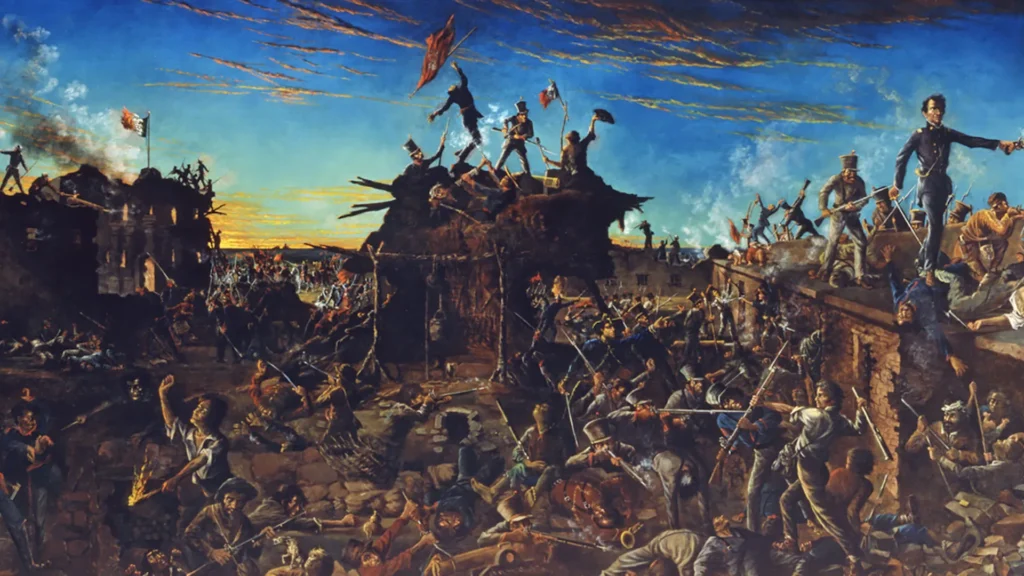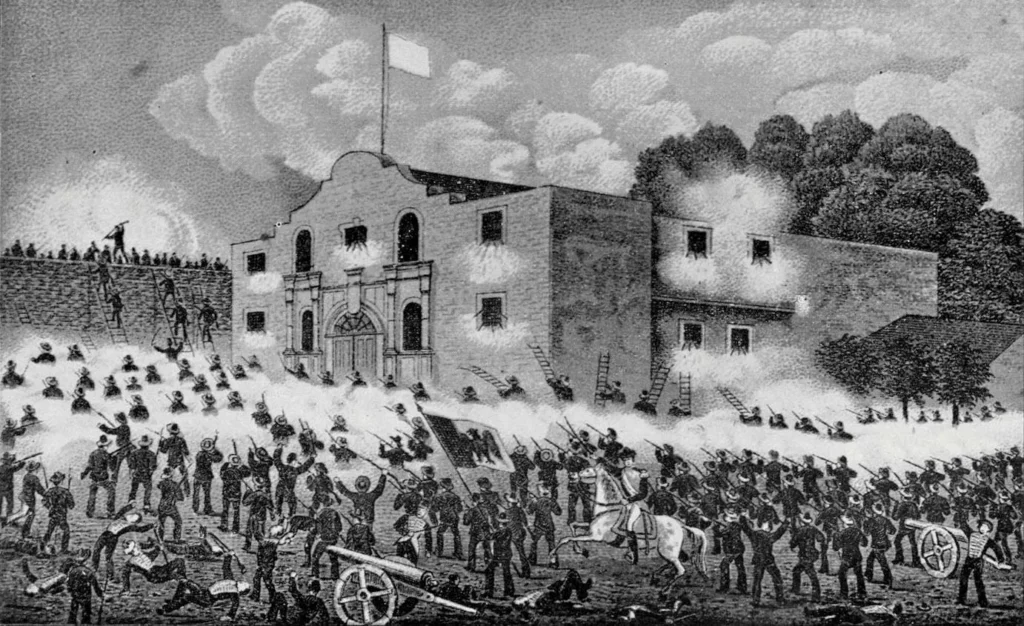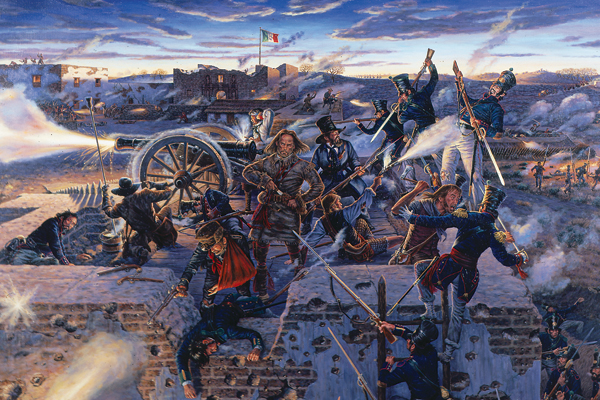The Texan independence movement refers to the efforts of Texans to gain independence from Mexico in the mid-19th century. In 1821, Mexico gained independence from Spain and established itself as a federal republic, with Texas as one of its provinces. However, by the late 1820s, American settlers in Texas had grown discontent with the Mexican government, which was seen as oppressive and corrupt. This led to the establishment of an independence movement in the early 1830s, which culminated in the Texas Revolution of 1835-36.
The Texas Revolution was sparked by a series of events, including the Mexican government’s attempt to disarm the American settlers, a massacre of Texan soldiers at the Alamo, and the defeat of Santa Anna’s army at the Battle of San Jacinto. These events led to the formation of the Republic of Texas, which was recognized as an independent nation by the United States and several European countries. However, the Republic of Texas was eventually annexed by the United States in 1845, becoming the 28th state.
The Texan independence movement was fueled by a desire for greater political and economic freedom, as well as a growing sense of cultural and national identity among the American settlers in Texas. Despite its eventual failure to gain full independence, the movement is remembered as an important moment in Texan and Mexican history and is celebrated each year as Texas Independence Day.
Overview of Mexican Reign on Texas
Mexico ruled over Texas from 1821 to 1836. During this period, Texas was part of Mexico as a province and faced various challenges, including political and economic instability, disputes with indigenous tribes, and tensions with American settlers.
Mexico’s rule over Texas was marked by a series of reforms aimed at centralizing the government and strengthening the power of the federal government over the states. However, these reforms were often seen as oppressive by American settlers in Texas, who were accustomed to a greater degree of political and economic freedom.

Additionally, the Mexican government imposed taxes and trade restrictions on American settlers, and sought to limit American immigration to Texas. This caused growing discontent among the American settlers, who began to call for greater autonomy and eventually independence from Mexico.
The tensions between Mexico and the American settlers in Texas eventually led to the Texas Revolution in 1835-36, which resulted in the establishment of the Republic of Texas as an independent nation. Mexico did not recognize the independence of the Republic of Texas, and tensions between the two nations continued until Texas was eventually annexed by the United States in 1845.
Texas Revolution
The Texas Revolution was a conflict that took place between 1835 and 1836 between the Republic of Texas and Mexico, which resulted in the establishment of the Republic of Texas as an independent nation. The revolution was largely fueled by political and economic tensions between American settlers in Texas and the Mexican government, as well as a growing sense of cultural and national identity among the settlers.
The conflict was sparked by a series of events, including Mexico’s attempt to disarm the American settlers and a massacre of Texan soldiers at the Alamo. These events led to the declaration of independence from Mexico by the settlers in Texas, who formed a provisional government and raised an army to fight against Mexican forces.
The Texan army, under the leadership of Sam Houston, defeated the Mexican army led by Santa Anna at the Battle of San Jacinto on April 21, 1836. The victory at San Jacinto effectively ended the conflict, and Santa Anna was captured and forced to sign a treaty recognizing the independence of the Republic of Texas.
The Republic of Texas was recognized as an independent nation by the United States and several European countries. However, it faced numerous challenges, including internal political struggles and threats from Mexico, which did not recognize its independence. The Republic of Texas eventually became the 28th state of the United States in 1845, following its annexation by the United States.
The Texas Revolution is remembered as a significant moment in Texan and Mexican history, and its impact can still be felt today. The battle cry of the Texan army, “Remember the Alamo!”, has become a symbol of Texan independence and cultural identity.

The Battle of the Alamo
The Battle of the Alamo was a key battle fought during the Texas Revolution, which took place from February 23 to March 6, 1836. The battle was fought between a small group of Texan soldiers and a much larger Mexican army led by General Antonio López de Santa Anna.
The battle was fought at the Alamo mission in San Antonio, Texas, which had been fortified by the Texan army and was being used as a military stronghold. The Texan army was led by William Barret Travis and included Davy Crockett, Jim Bowie, and other well-known figures in Texan history.
The Mexican army surrounded the Alamo and laid siege to the fortification, which lasted for 13 days. Despite being vastly outnumbered, the Texan soldiers fought fiercely and managed to hold off the Mexican army for several days. However, the Mexican army eventually overpowered the Texan army, and all of the Texan soldiers were killed in the battle, including Travis, Bowie, and Crockett.
The Battle of the Alamo was a significant moment in the Texas Revolution, as it demonstrated the determination of the Texan soldiers and their willingness to fight for their cause. The battle is often remembered as a symbol of Texan bravery and sacrifice, and its impact on the history of Texas and the United States is still felt today. The phrase “Remember the Alamo!” has become a rallying cry for Texan independence and cultural identity.
Phases of the Battle

The Battle of the Alamo can be divided into several phases:
- Preparation and fortification: Prior to the battle, the Texan army fortified the Alamo mission, constructing barricades and digging trenches to defend against the Mexican army. The Texan army was led by William Barret Travis, Davy Crockett, and Jim Bowie.
- Siege: On February 23, 1836, the Mexican army led by General Antonio López de Santa Anna surrounded the Alamo and began a siege, which lasted for 13 days. During this time, the Texan army was under constant attack by the Mexican army, but managed to hold off their advances.
- Assault: On March 6, 1836, the Mexican army launched a final assault on the Alamo, overwhelming the Texan soldiers with their superior numbers. The Texan soldiers fought bravely, but were ultimately outnumbered and outgunned. All of the Texan soldiers were killed in the battle.
- Aftermath: The Battle of the Alamo was a significant loss for the Texan army, but it served as a rallying cry for the independence movement and inspired other Texans to join the fight against Mexico. The phrase “Remember the Alamo!” became a symbol of Texan bravery and sacrifice, and continues to be a powerful symbol of Texan cultural identity.
It is important to note that the Battle of the Alamo was just one part of the larger Texas Revolution, which ultimately led to the establishment of the Republic of Texas as an independent nation and its eventual annexation by the United States as the 28th state.
Aftermath

The aftermath of the Battle of the Alamo had a profound impact on the Texas Revolution and the history of Texas.
- Inspiration for the Texan Army: The bravery and sacrifice of the Texan soldiers at the Alamo served as a rallying cry for independence and inspired other Texans to join the fight against Mexico. The phrase “Remember the Alamo!” became a symbol of Texan patriotism and cultural identity.
- Defeat of the Mexican Army: The Texan army, under the leadership of Sam Houston, went on to defeat the Mexican army led by Santa Anna at the Battle of San Jacinto on April 21, 1836. This decisive victory effectively ended the conflict and secured the independence of the Republic of Texas.
- Recognition as an independent nation: The Republic of Texas was recognized as an independent nation by the United States and several European countries, although it faced numerous challenges, including internal political struggles and threats from Mexico, which did not recognize its independence.
- Annexation by the United States: In 1845, the Republic of Texas was annexed by the United States and became the 28th state of the country. This marked the end of the Republic of Texas as an independent nation and its integration into the United States.
- Legacy and cultural significance: The Battle of the Alamo is remembered as a significant moment in Texan and Mexican history, and its impact can still be felt today. The battle cry of “Remember the Alamo!” continues to be a powerful symbol of Texan independence and cultural identity. The Alamo mission has been preserved as a historical site and is a popular tourist attraction, drawing visitors from around the world to learn about the history of the Texas Revolution.
Conclusion
In conclusion, the Battle of the Alamo was a seminal moment in the history of Texas and the United States. The bravery and sacrifice of the Texan soldiers at the Alamo, who fought against overwhelming odds, served as a rallying cry for independence and inspired other Texans to join the fight for freedom. The battle ultimately led to the establishment of the Republic of Texas as an independent nation and its eventual annexation by the United States as the 28th state.
The legacy of the Battle of the Alamo continues to be felt today. The phrase “Remember the Alamo!” is a powerful symbol of Texan patriotism and cultural identity, and the Alamo mission remains a popular tourist attraction and a significant historical site. The battle and its aftermath demonstrate the importance of perseverance, bravery, and sacrifice in the pursuit of freedom and independence. The Battle of the Alamo serves as a reminder of the struggles faced by the early settlers of Texas and their determination to establish a free and independent nation.


